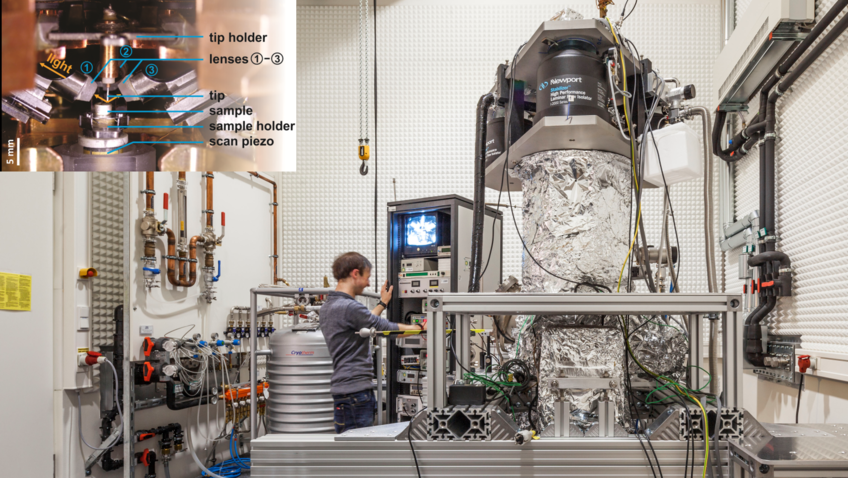
Scanning Tunneling Luminesence
In Scanning Tunneling Luminesence (STL) the combination of electronic and optical spectroscopies with atomic-scale spatial resolution is able to provide a comprehensive picture of energy conversion at the molecular level. In an STL experiment the tunneling current passes through a quantum system (e.g., a molecule) insulated from the substrate by a decoupling layer. The optical emission of the localized dynamic dipole of the excited quantum system couples to tip-induced cavity plasmons between metallic tip and substrate. From the cavity, electromagnetic waves couple efficiently to free propagating light through the lightning-rod effect at the tip apex. In addition, inelastic electron tunneling channels can directly excite cavity plasmons and lead to the emission of photons even in the absence of a quantum emitter. The technique opens the gate to directly access the molecular aspects of the charge separation and recombination dynamics responsible for light emission and light absorption of individual molecules and their nanostructures at surfaces.
The key experimental development that provided access to charge excitation dynamics on the atomic scale with picosecond resolution is the application of shaped ultrafast voltage pulses and photon correlation spectroscopy. To this end we employ the light emission from the STM to determine the precise shape of STM voltage pulses with picosecond resolution and millivolt precision inside the tunnel junction. This allows us to correct for cable-induced pulse distortions and precisely tailor the voltage pulse shape exactly as they appear at the junction. The well-characterized short voltage pulses thus obtained are then employed to explore the charge transfer dynamics of single molecules with unprecedented spatiotemporal resolution.
Photon correlation experiments using Hanbury Brown-Twiss (HBT) interferometry provide an unprecedented access to ultrafast fluctuation and relaxation processes in single quantum systems. In addition the correlation characteristics directly reflects the emission processes. These arise from how stochastic fluctuations couple to the electromagnetic modes of an environment, which imprint characteristic deviations away from Poissonian statistics onto the temporal correlations in the emitted photon stream.